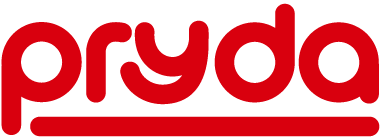
Written and provided by Andrew Kidd, Chair of the FTMA Frame and Truss National Safety Council
Highlighting the Importance of Machinery Safety and Guarding
This month we will have look at why it is important to ensure that all your plant, machinery and equipment is properly guarded to prevent people accessing any dangerous areas of the plant or equipment.
Let’s start with a definition: Plant includes machinery, equipment, appliances, containers, implements, tools and components or anything fitted or connected to those things. Some examples of plant include saws, nail guns, strapping equipment, drills, grinders, lifts, cranes, computers, any machinery, racking, scaffolding components, conveyors, forklifts, augers, vehicles and all hand-held power tools.
As an example of why this matters, this month there was a successful prosecution resulting from a serious injury to an employee at a timber processing company. The incident has served as a sobering reminder of the dangers posed by poorly guarded machinery, improper operating practices and a lack of operator training. While we cannot provide specific details about the incident, the situation involved a worker who sustained serious injuries due to exposure to nip points on a conveyor. The worker was drawn into the nip points and suffered crush and entanglement injuries. The root cause stemmed from guard panels that had been modified from the original design, which then failed to fully protect against hazardous moving parts, along with the absence of an emergency stop control within easy reach of the operator.
This incident highlights the critical need for all manufacturers to adhere strictly to machinery safety standards, particularly when it comes to conducting regular equipment checks, ensuring proper guarding, maintaining accessible emergency stops, and avoiding unauthorized equipment modifications. By taking proactive steps in these areas, we can prevent such devastating incidents and protect the health, safety and welfare of all workers.
Key areas of focus
All state safety regulators impose general and specific obligations on designers, manufacturers, suppliers and installers of machinery or “plant”. As well as employers and employees who use machinery or plant in the workplace. With these key obligations in mind, here are a few key points to consider:
- Documentation and training
-
-
- Employers must have up-to-date risk assessments, operating manuals, SOPs/JSAs and work instructions for the equipment on site. All equipment should be subject to regular, documented inspections to ensure it is safe to operate and has not been modified or tampered with.
- Employees must receive a comprehensive training on the operation and use of the equipment they are using, the job tasks they will be performing and how to isolate and clear the equipment when needed.
- Employers should have in place arrangements for provision of instruction, training and supervision of workers to ensure the machinery is only operated with the guarding in place and that guarding is never modified without OEM approval.
-
- Guarding of machinery
-
- Employers and people who have control of a workplace must ensure that every dangerous part of fixed, mobile or handheld plant is, as far as practicable, securely fenced or guarded with regard to the level of danger the hazard presents.
- Guarding is a fundamental aspect of machinery safety. All hazardous moving parts, particularly nip points and areas around drive rollers, must be properly guarded to prevent crush and entanglement injuries. Regular inspections should be conducted to identify any gaps or potential weaknesses in precautions.
-
Image 1: motioncontrolsrobotics.com/estops
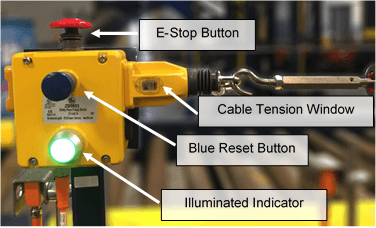
Trip cord style E-stop – good for swing saws, progressor stations and conveyor belts.
Image 2: worksafe.govt.nz/guarding-of-conveyors
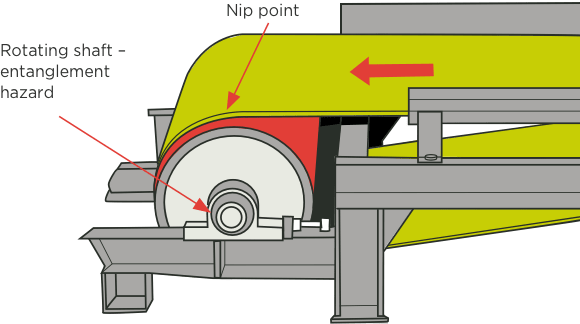
Common hazards on conveyor belt systems
- Accessible emergency stop controls
-
-
- Emergency stop controls (E-stops) should be within reach when an operator is at their usual working position and in all machinery areas where a hazard may be within reach. E-stops must be within reach when attending to tasks such as maintenance, cleaning, or clearing blockages, isolation and lock-out procedures must be followed to eliminate risks of accidental activation of the equipment by the operator or others.
- A lanyard type pull-wire emergency stop is the most suitable emergency stop for exposed belt type conveyors, where workers are required to access the belt area when the conveyor is in use, for example when placing and removing timber components from an outfeed conveyor. E-stop controls should be manually reset before the conveyor can be restarted from its normal start control.
-
- Equipment selection
-
- Have a record of what selection criteria was considered when the equipment was chosen. Don’t buy the cheapest equipment. Decide on the safety features you need and purchase based on these. Consider safety features such as: fixed guards and safety interlocks, two handed controls and integrated timber sensors, manual handling ergonomics, reduced noise etc.
-
Image 3: Andrew Kidd audit archive
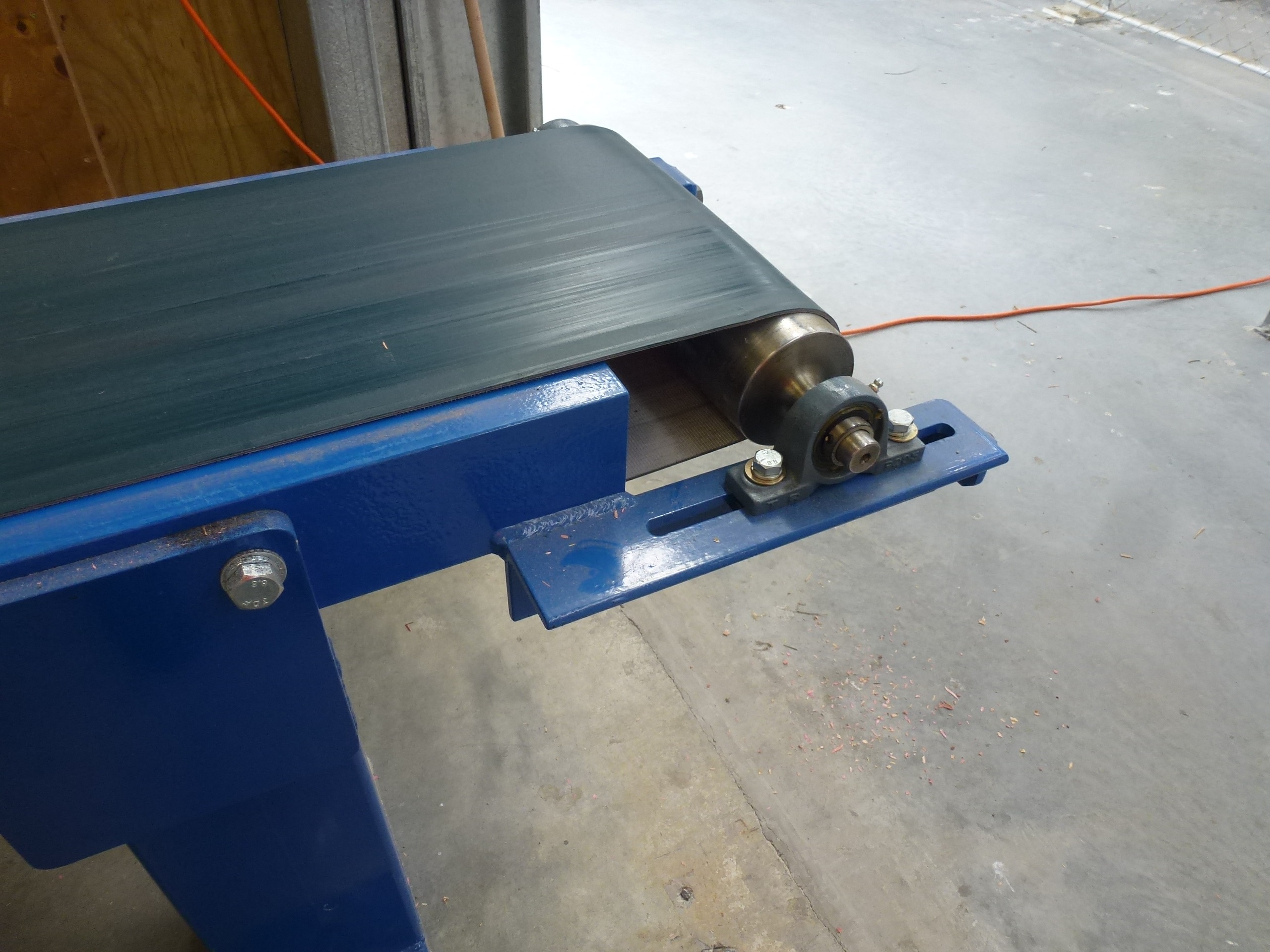
Image 4: Andrew Kidd audit archive
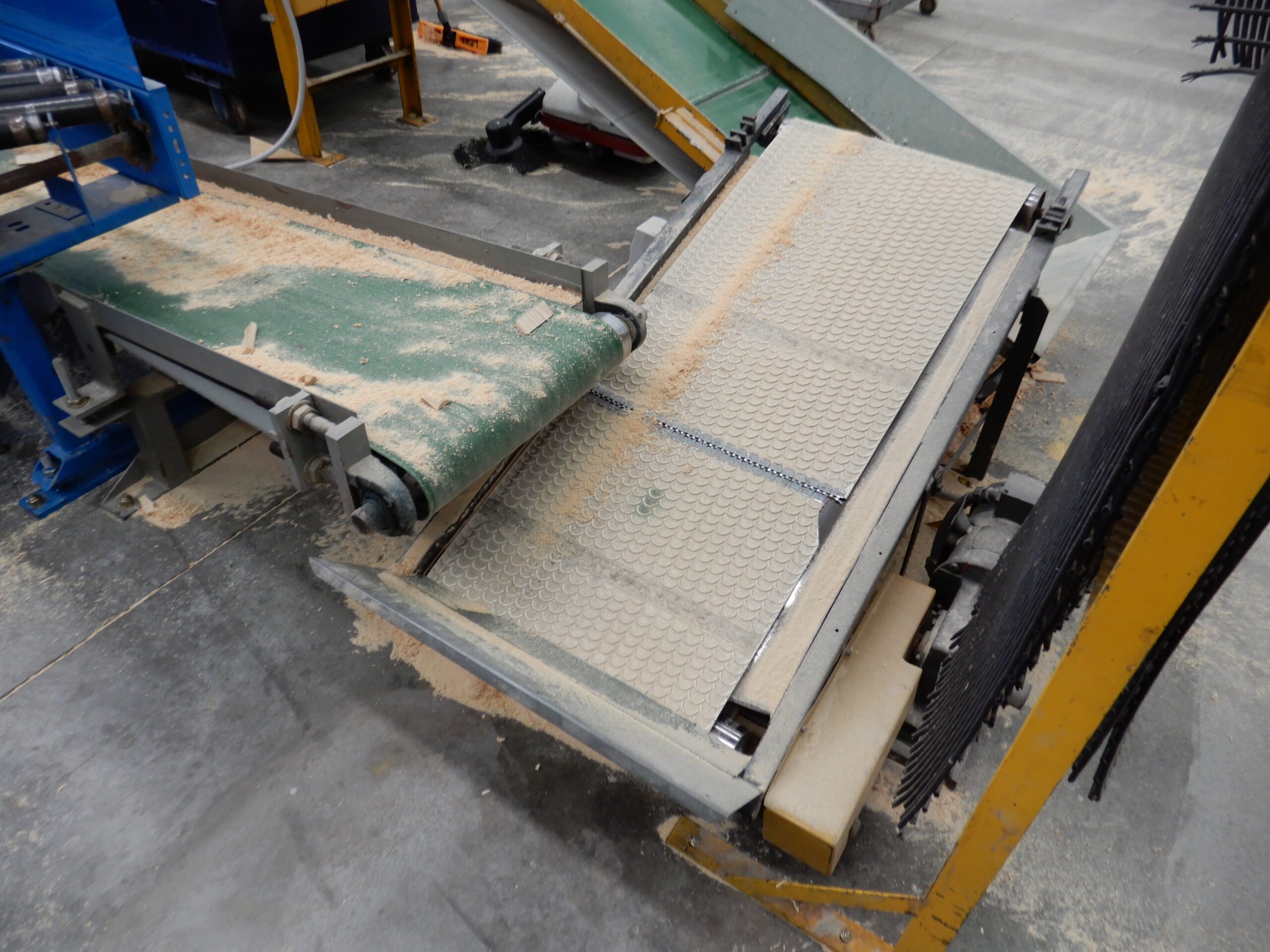
Component and waste outfeed conveyors:
Both with exposed nip point, rotating shaft entanglement hazard and no nearby emergency stop in case of emergency
Conveyor systems
Conveyor systems are a popular way of handling materials, but they can pose significant risks if they are not guarded correctly. Harm can be caused by; contact or impact injuries, bruising, trapped hands – potential cut or crush injuries and serious injuries from entanglement in moving or rotating parts. Most serious accidents involving conveyors result from inadequate guarding, between the conveyor belt and:
- Discharge plate/ roller
- Drive pulleys
- Idler pulleys
- Conveyor frame, or between the belt pulley and conveyor frame
- Projecting shafting
- Belt cleats and belt fasteners
Risk assessments and due diligence
Regulations require an equipment supplier to ensure their equipment is safe for use and to give adequate information about its intended purpose to the end user. This usually means they will supply a risk assessment with each machine. However, the risk assessment that comes with the machine may not cover all of the hazards and risks in your workplace. The installation, local operations and use of the machine can all create hazards and subsequent risks that the equipment supplier / manufacturer may not foresee. This means that employers must undertake their own risk assessment once a machine is installed. Or at the very least, review the suppliers risk assessment to ensure that no additional hazards have arisen from the local installation and use of the equipment.
It is worth noting that, an officer of a company (including a director) has a duty to exercise due diligence to ensure that the business complies with its duties under law. This means an officer must take steps to acquire knowledge of WHS matters in the business and gain an understanding of the nature of the operations of the business and of the hazards and risks associated with those operations. The employer must develop a plan to identify hazards in the activities of the company and ensure information is available to workers relating to the procedures designed to ensure the safety of specific operations that pose health and safety risks. Understanding what guards come as standard with a machine, why they are important and that they must not be modified without expert advice and due consideration is critical.
A proactive approach
It is likely that WorkSafe Authorities will target industries utilising similar machinery, with a focus on guarding and maintenance practices. We encourage all members to review their current machinery, ensure compliance with applicable safety codes and regulations, and eliminate any unauthorised or unsafe modifications.
The Code of Practice “Managing Risks of Plant in the Workplace” is available on the Safework Australia website and provides detailed guidance on identifying hazards and implementing safety measures.
Your attention in maintaining these safety standards is vital to ensuring a safe and healthy work environment and preventing workplace injuries.
If you need help in determining if your equipment has the appropriate or current up-to-date guarding fitting, or if it is working as intended, please reach out to your equipment supplier for advice or assistance.
If you have any questions or require further assistance about any specific issues from the above information, please feel free to contact me.

Follow FTMA Australia for Industry News and Updates
Our Principal Partners


